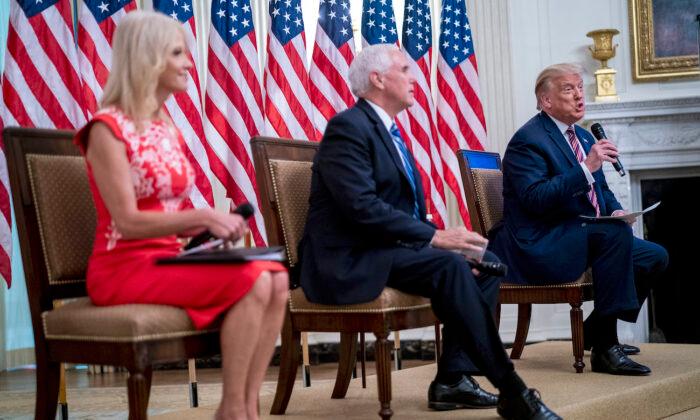The Trump administration is calling on Congress to appropriate $105 billion to provide financial assistance and incentives to help states reopen schools.
Of the $105 billion, $70 billion is intended for K-12 schools, the White House announced.
Vice President Mike Pence said that the administration is calling on Congress to authorize $105 billion to ensure that states have the resources to safely reopen schools.
“We believe that we can safely reopen our schools. We know that it’s best for our kids. We don’t want them fall behind, academically,” Pence said at an open discussion at the White House on Wednesday. “But also, we don’t want our kids to miss out on the counseling that they receive, special needs services, as well as all the nutrition programs that are available just at our schools.”
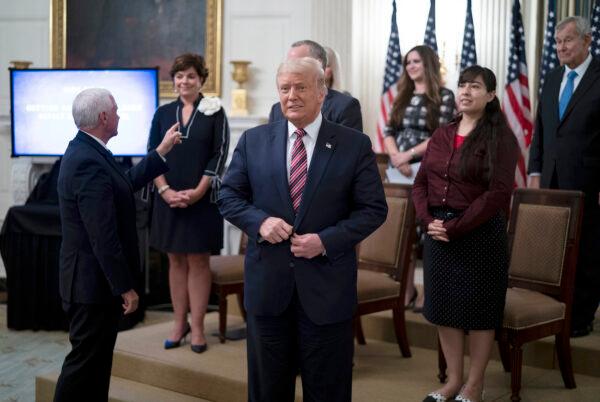
Attendees spoke in support of reopening schools and raised several concerns over the potential negative consequences of children not having the option to have in-person learning. They also talked about how best to reopen schools safely.
DeVos told attendees: “Students and their families can’t be held captive to other people’s fears or agendas. We have got to ensure that families and parents have options that are going to work for their child and their children’s education.”
Pence said that giving the choice for parents and students wishing to return to schools for in-person learning is not just a priority for the well-being of the students, but also important for working families.
“Only about 20 percent of single parents are able to telework. And so, to open up America again, we’ve got to open up America’s schools. To put America back to work, we’ve got [to put] our kids back in the classroom,” he said.
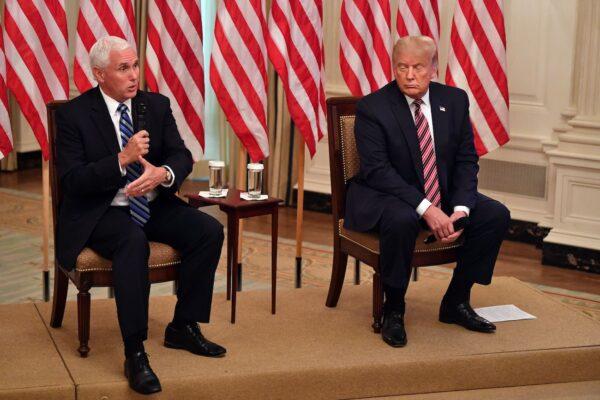
So far, the Trump administration has provided $13 billion in federal funding that states can use under the CARES Act to support a safe reopening for K-12 education.
White House adviser Kellyanne Conway said that an official from Health and Human Services (HHS) told her that “only 4 percent” of the funds “has been tapped into.”
“They can use that to help them with the temperature checks, with the testing—however they wish to use it,” Conway noted of the funding. “So we would really implore those states and those local school districts to take advantage of the money that [the Trump administration] and others have already secured in a bipartisan fashion.”
“Overall, we know that the risk is low for kids in contracting and being hospitalized and, of course, the worst possible outcome, dying from COVID-19,” Conway said. “But the risk is very high if they’re locked down indefinitely.”
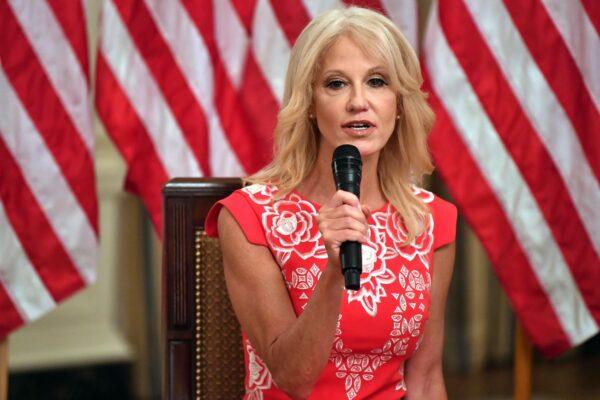
Addressing why “the risk is very high” in the case of an indefinite lockdown, Conway said, “The lack of digital assets was very obvious for many of our students; the lack of nutrition; the lack of social and emotional and mental well-being and development.”
“But also, we heard from many school administrators and teachers: They’re concerned because roughly one out of five child abuse cases are detected in schools. So we have to also think about all that we don’t know and all that is being lost for these children by keeping them locked down indefinitely.”
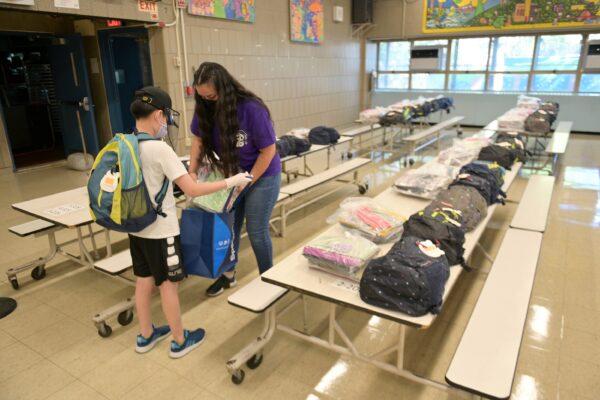
The White House said in a statement that “the unintended consequences of keeping schools closed could damage our children’s education for years to come and hinder our nation’s economic comeback.”
“Cancelling in-person classes and allowing only virtual learning disproportionally harms the education of lower income children,” the statement continued. “During school closures in the spring, students’ math progress in low-income zip codes decreased by roughly 50 percent and students in middle-income zip codes fell by a third.”
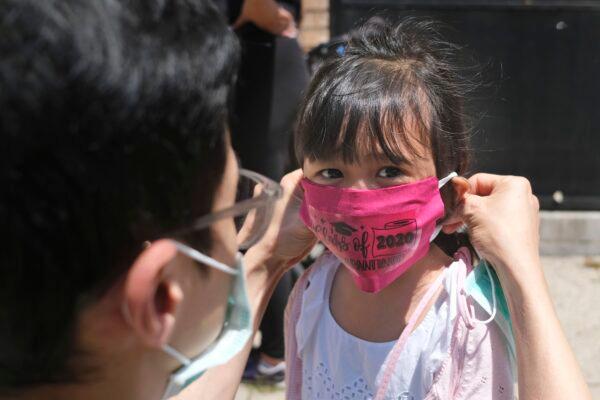
The recommendations also give high-risk teachers and students, as well as students who live with high-risk adults, the option to choose distance education instead.
“We believe many school districts can now reopen safely, provided they implement mitigation measures and health protocols to protect families, protect teachers, and to protect students,” Trump said in a statement.
“I'd like to see the money follow the student,” Trump said.
“We’re having a hard time with the Democrats,” he added. “They want the money to follow the union, to be honest. It’s very simple: ‘Give it to the union.’ But the fact is—‘Give it to dues.’ Because the union people are fantastic people in there, but the people that run the union, it’s disgraceful, and the dues that they charge the teachers. And that’s what it’s all about.”
“I would like the money to follow the student. And this way, you can make your own choice if the school is closed,” Trump said.
